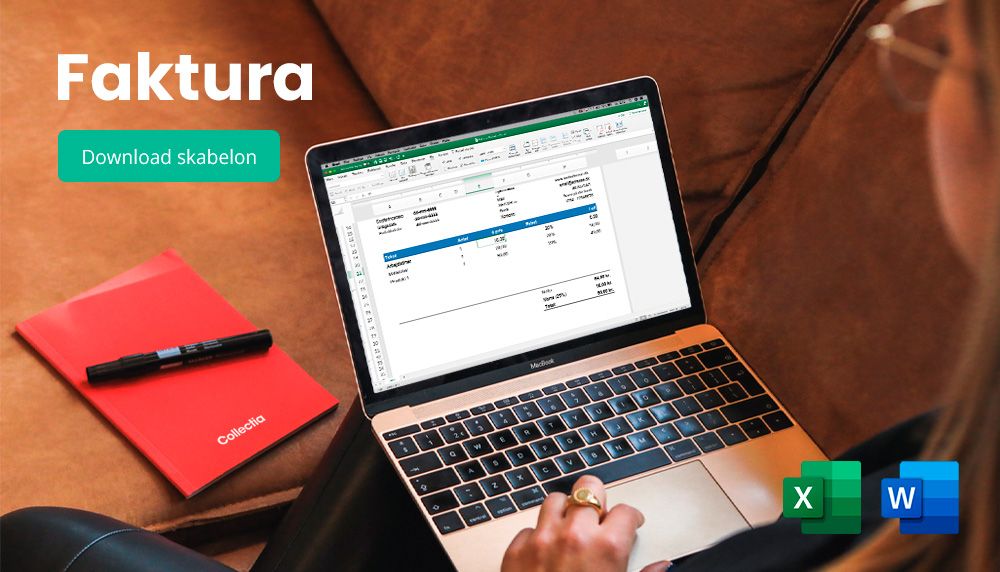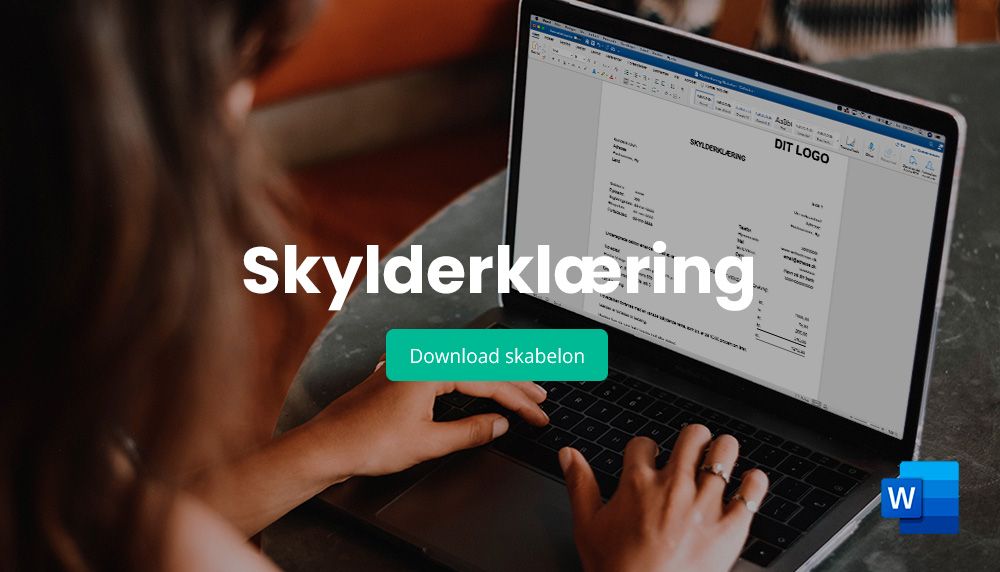
10 tips to avoid bad payers
How to avoid bad payers
As a trader, it is almost inevitable that at some point you will run into a bad payer. You have carried out work or provided a service and are therefore entitled to be paid for it.
Here are some tips to help you better spot a bad payer in the future and reject the person/company in advance. Knowledge of the customer's background and finances, as well as clear company procedures, are key to avoiding bad payers and non-payments.
1. know your customer
Get as much information about the customer as possible so that you have a clear knowledge of the customer's identity and credibility (you can't ask for too much). ID, documentation, Krak, De Gule Sider, PROFF, Visma Rating and CVR are just a few tools that can help give you peace of mind. Google is also a simple and effective tool that can help you steer clear of bad payers and people/companies with bad intentions.
Unfortunately, we find that companies rarely make use of the above when establishing a new customer relationship.
Remember also to check if the customer is already registered as a bad payer and their creditworthiness (more on this in the following sections).
2. Get everything in writing
Trust is a good thing, but unfortunately it is not always enough if you disagree on the terms of the agreement. Therefore, get all agreements in writing so that there is no doubt that the deal is done. Make it clear in advance how you will deal with unpaid bills, as this has proven to be effective in promoting timely payment.
We often find that the buyer and seller disagree on the content of the actual contract. If this is the case and the buyer has objected to the invoice claim, Danish law does not allow you to initiate debt collection proceedings in the hope of recovering your receivable. This creates a dispute that must first be resolved. Getting confirmation of agreements via email is a simple solution to this problem. Of course, a verbal agreement is also binding, but for good reason, it is difficult to provide proof of this in court should it come to that.
3. Send your invoice today - not tomorrow
Remember to send your invoice to the customer as soon as possible. You wouldn't think it, but many businesses wait too long to send an invoice for the work done. This gives the customer a long credit line and reduces your cash flow. It's basically a signal you need to send to the customer. If the invoice is sent quickly, you should expect it to be paid quickly and at least before the due date. If the invoice is sent several weeks after the work has been done, in some cases the customer will feel that it is OK to wait a little.
The same rule applies to debt collection. The longer you wait to send the unpaid invoice for collection, the harder it is to recover the money.
4. Establish a strict reminder policy and clear conditions
Make sure the customer understands your terms and conditions. If they make too many twists and turns here, it could be a sign of poor creditworthiness. In the unlikely event of an accident, have an action plan ready that spells out what you will do and who will help you get your money back.
If you have an unpaid invoice, it is important that you act quickly. This significantly improves your chances of getting your money back. You can, of course, sendreminders, payment reminders and collection no tices to your customers yourself. But you must be consistent and follow the standard procedure set out in your policy/terms and conditions.
Your policy should also clearly state what will happen if the payment is still not made after the reminder process. Will the claim be passed on to a lawyer? Or will you use a debt collection agency to collect the debt?
There is no golden rule for which and how many actions your company should take. But a consistent and transparent process will increase your chances of recouping the money.
5. Be consistent
If you have a procedure in place for bad payers, it is essential to be consistent. If you have given the customer 10 days to pay, take action on the 11th day. If you bend the rules first, word may spread to your other customers, who can take advantage of this knowledge. Be consistent in every case - this sends a clear signal that people should only do business with you if they intend to pay.
6. carry out a background check and possibly a credit check
There are many ways to do a simple background check on new customers. We always recommend that you do this to ensure that the prospects for a healthy working relationship are brighter. Check out the customer on Google (or check reviews on Trustpilot) and look at their publicly available financial statements. If a company has been around for many years and is delivering positive results, you should naturally be less worried about doing business with them versus a company that has not yet filed its first annual accounts.
Credit reports are also a valuable tool for assessing existing and potential customers' ability to pay. There are several online platforms where you can look up a customer and see if they have payment history. The most well-known is Experian, which can tell you if the customer is registered in the payment register, RKI. As a business owner, granting credit to a customer who is registered as a bad payer can be a very expensive lesson.
If you are a B2B trader, it is worth knowing that companies with payment remarks in RKI are often declared bankrupt after 3 months. This is, of course, because the company can no longer buy on credit and therefore cannot continue its operations.
7. Take a look at the customer's finances
All enterprises that are required to keep accounts have their accounts available digitally at datacvr.virk.dk. How much information is available will depend on the type of company. For the most part, you will be able to read the company's equity, regardless of whether it is a sole proprietorship or a large company. If the company's equity is very low, it may indicate that their ability to pay is low/low. However, a good tip is to compare the customer with other companies from the same or similar industries.
Another ratio that I would recommend you look at is the liquidity ratio*. This ratio can also be used as an indicator of the company's ability to pay. It looks at the ratio of the company's current assets to its current liabilities (what percentage of current assets are current liabilities). As a rule of thumb, this should be at least 150%.
*Liquidity ratio = (current assets x 100) / current liabilities
8. Require prepayment
The headache of dealing with bad payers and potential debt collectors can be largely avoided if you require advance payment (or bank guarantee) and make use of a standing order. It sounds simple, but most people don't do it. My theory for this is that business owners are afraid of sending the wrong signal to both existing and new customers. At the same time, I think it sends a strong signal to customers that you are a serious trader who stands behind your products/services.
For many businesses (especially small businesses), new work/projects depend on having sufficient liquidity. However, non-payment from a previous project can be an obstacle to starting a new project. In some cases, it can result in the company going out of business. Therefore, I would advise companies that have large receivables (for the purchase of materials and raw materials) to consider prepayment as a solution.
If the customer is willing to pay 10%-20% upfront, it often indicates a customer who shows commitment and intends to pay the full amount in the end. If the customer refuses to pay upfront, it is clearly a danger signal in my eyes, which is why I would avoid doing business with them.
9. Maintain common sense
Most traders naturally have a business sense and an eye for sound business. These qualities are more important to consider than anything else. Of course, you can significantly minimize your risk of trading with bad payers by using some of these tips. But your gut feeling and intuition should be paramount. If you feel uncomfortable doing business with the customer, despite good financial statements and promises, you should withdraw.
10. Have a debt collection or law firm at the ready
If you find yourself in the unfortunate situation of a customer not paying their bill despite reminders and attempts to contact them, you should have a debt collection or law firm at the ready. As previously described, it is important to act quickly. I therefore recommend that you already now (before any debt collection cases have arisen) find a partner who can take the next step. At the same time, I recommend that you do not leave your unpaid bills unpaid for too long. It should not take more than 40 days from the due date of the invoice until it is sent for collection. Any longer and the likelihood of recovery will be significantly lowered.











